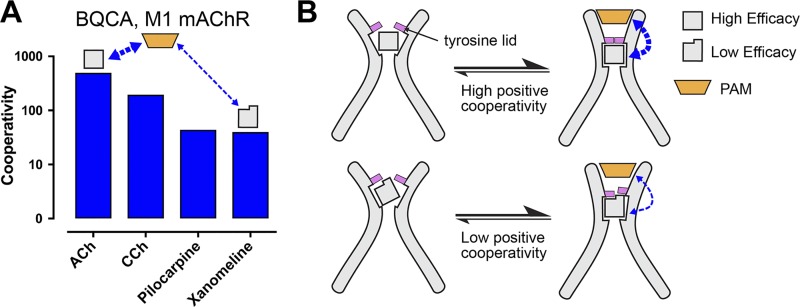Figure 5.
Probe dependence as a consequence of a two-state model of allostery. (A) Cooperativity values for BQCA and different orthosteric agonists at the M1 mAChR from cAMP accumulation assays (y axis values denote the fold increase in agonist potency in the presence of modulator). Acetylcholine (ACh) and carbachol (CCh) are high-efficacy agonists and are potentiated to a greater extent than the low-efficacy agonists pilocarpine and xanomeline. Thus, the degree of cooperativity is correlated with the intrinsic efficacy of each ligand. Data are replotted from Canals et al. (2012). (B) A speculative cartoon for a two-state model of allostery at the M1 mAChR. High efficacy agonists have high cooperativity with PAMs by promoting a fully active conformation, indicated by a fully closed tyrosine lid. Low-efficacy agonists do not promote a fully active conformation, indicated by a partially closed tyrosine lid, and thus have lower cooperativity with BQCA.

